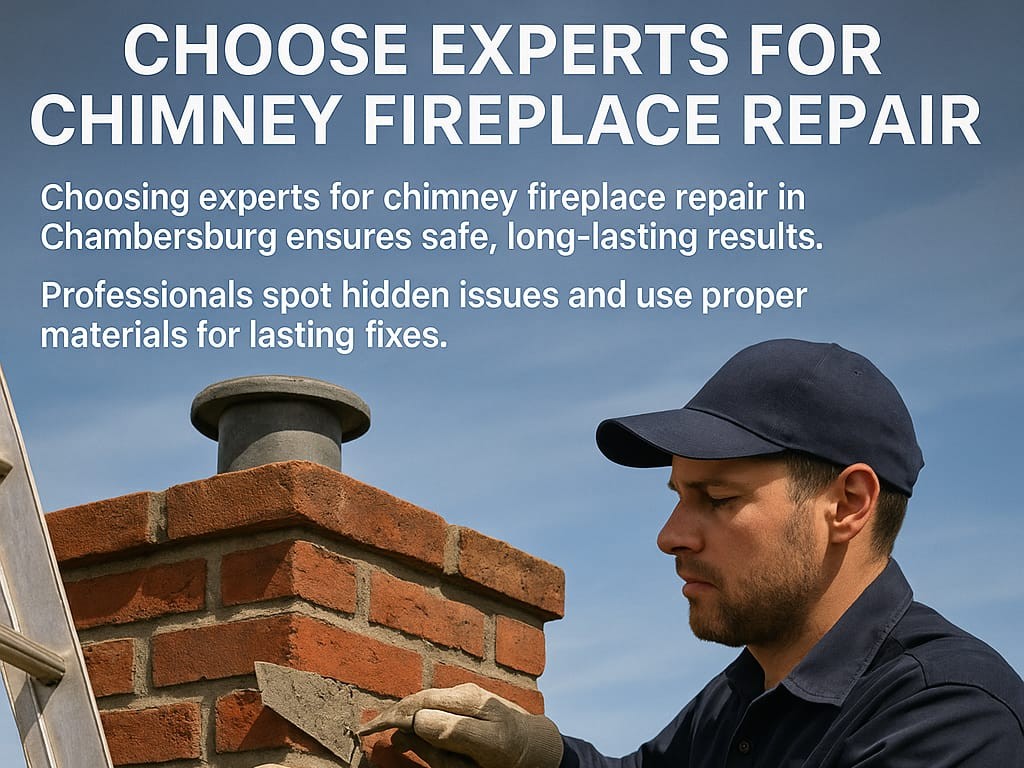There’s something timeless and comforting about gathering around a glowing fire on a chilly evening, but that cozy scene can quickly turn stressful if your fireplace or chimney isn’t in good shape. Over time, wear and tear can sneak up on you, especially if you’re not sure what to watch for. Learning how to spot Chimney Fireplace Repair needs early on could save you from more expensive headaches down the road — and keep your home warm and safe. In this guide, I’ll break down the telltale signs that your chimney or fireplace might be calling out for some expert Chimney Fireplace Repair.
Cracks, Stains, and Strange Smells: The Visual and Sensory Clues
One of the first things I always recommend is taking a good look at your fireplace and chimney every few weeks, especially during the colder months. You don’t need to be a professional — just trust your senses. If you notice bricks or mortar that are crumbling, dark streaks running down the chimney, or any signs of water stains, it’s time to pay attention. These issues might seem minor at first, but they could indicate deeper problems like moisture intrusion, damaged masonry, or even hidden leaks.
Another clear warning sign is an odd or musty smell coming from your fireplace, especially when it hasn’t been in use. This can be a red flag for creosote buildup, animal nests, or mold growth hiding where you can’t see. Any persistent odor is a nudge to get things checked out — a professional chimney inspection can reveal issues you wouldn’t spot on your own.
Soot stains are another giveaway. A little bit of soot is normal, but thick, dark stains where the bricks meet the ceiling or on the front of your fireplace shouldn’t be ignored. This might mean your fireplace isn’t venting properly, which could put your indoor air quality at risk.
Listening to Your Fireplace: Unusual Noises and Airflow Changes
When you light a fire, pay close attention to the way it burns and the sounds you hear. If you notice a rush of air coming down the chimney, a whistling sound, or even a fluttering noise, this could mean there’s a blockage or damaged flue. Birds, squirrels, and debris love to make themselves at home in chimneys, and their presence can cause both strange noises and airflow problems.
If the fire seems to struggle for oxygen, or if smoke starts backing up into your living room instead of heading out the chimney, something’s definitely not right. Poor draft and smoke spillage are surefire signals that your fireplace needs attention. These symptoms can point to a clogged flue, broken damper, or even a misaligned chimney cap.
“A fireplace is meant to bring warmth and comfort, not worries and hazards. Taking a few moments to spot early signs of trouble can make all the difference for your peace of mind and your home’s safety.”
How to Check for Structural Issues and Water Damage
It’s easy to overlook the outside of your chimney, but sometimes the biggest problems are hiding in plain sight. Step outside after a rainstorm and give your chimney a once-over. If you see cracked or missing mortar, spalling bricks (those that are flaking or falling apart), or any leaning, it’s a clear sign that moisture has found its way in. Over time, water can do a number on brickwork, leading to bigger structural concerns.
Broken chimney crowns or flashing — that’s the metal or cement barrier at the very top — can let water seep inside, which quickly leads to rust, decay, and crumbling. If your home has a chimney liner, keep an eye out for tiny bits of tile or metal in your fireplace. This debris often means the liner is breaking down, which can make your chimney unsafe for use.
For homes with gas fireplaces, be on the lookout for condensation, rust, or a lingering “burnt” smell, as these can be signs of improper venting or hidden leaks. Regular fireplace maintenance is key to catching these issues before they become major repair jobs.
| Symptom | Possible Cause | Recommended Action |
|---|---|---|
| Visible cracks in bricks or mortar | Moisture infiltration, settling foundation | Schedule masonry repair |
| Water stains or rust marks | Leaking flashing, broken crown | Inspect and seal leaks |
| Smoky odors or poor draft | Clogged flue, creosote buildup | Professional cleaning needed |
| Debris or animal nests | Damaged cap, open flue | Clear out and install chimney cap |
| Excessive soot buildup | Poor ventilation, burning unseasoned wood | Chimney sweeping, burn dry wood |
| Strange noises when fire is lit | Blockage, loose damper | Inspection and repair |
When to Call the Experts: Don’t Ignore These Warning Signs
While some minor cleaning and maintenance can be done by homeowners, it’s smart to know when to bring in a professional for Chimney Fireplace Repair. If you notice any of the following, don’t wait too long to get help:
- Water dripping inside your fireplace or rust on metal parts
- Chunks of brick, mortar, or chimney liner falling into the firebox
- Persistent smoke smells, even when you’re not burning anything
- Any visible leaning or large cracks in the chimney stack
- Strange noises that don’t go away
Conclusion
Being proactive about spotting Chimney Fireplace Repair needs doesn’t just protect your investment — it ensures every fire you light is a safe and enjoyable one. Make it a habit to check for visible damage, listen for anything unusual, and address odd smells or stains right away. If in doubt, always reach out to a chimney professional for peace of mind. A little vigilance now can help you avoid costly repairs, keep your home protected, and enjoy your fireplace for years to come.
Read More: Chimney Sweep

